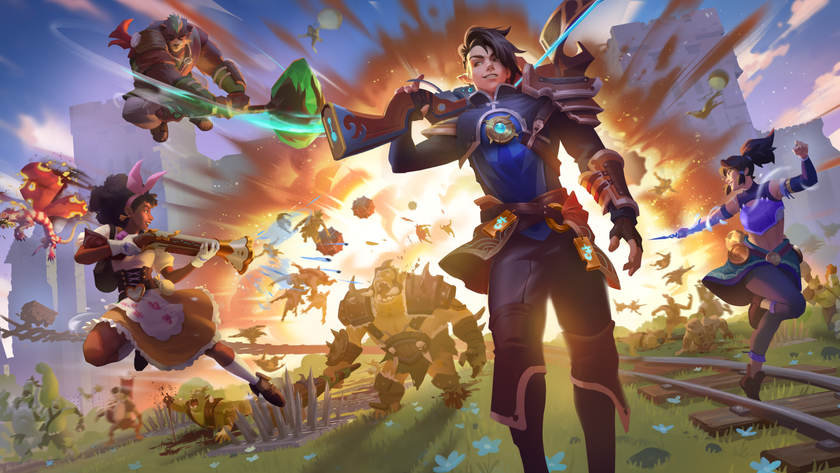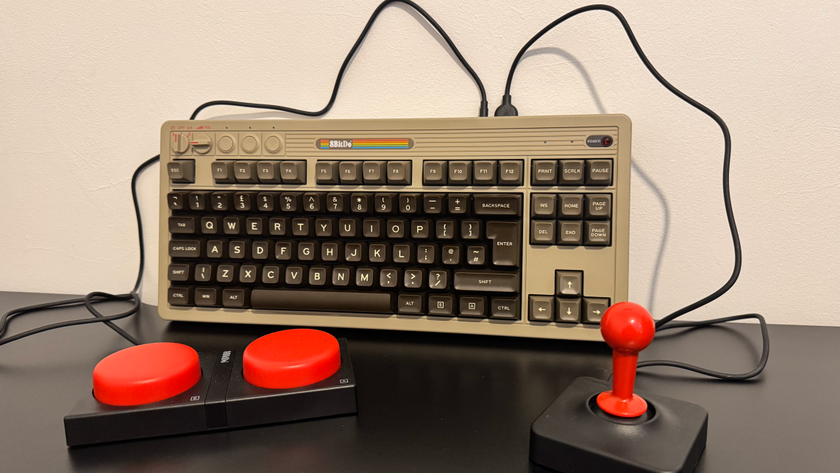Our Verdict
The RTS layer is limited and repetitive, but the platforming levels are well-designed and challenging.
PC Gamer's got your back
Smelter begins with the story of Adam and Eve and the downfall of Eden, and ends with freeing an empress from a crystal prison and racing to stop a megalomaniac demon from taking over what I presume is a section of Hell. It's a side-scrolling action-platformer with a real-time strategy overland map, a tower defense strategy game, and a top-down shoot 'em up, interweaving multiple indie-friendly genres—and not for its benefit.
What is it? 60% pixelated action-platformer, 30% real-time tower defense strategy, 10% top-down shoot 'em up.
Expect to pay: $19.99
Developer: X PLUS Company Limited
Publisher: DANGEN Entertainment, Gamera Game
Reviewed on: Windows 10, AMD FX 8350 Eight-Core, Radeon RX 580, 24GB RAM
Multiplayer? No
Link: Official site
The awkward blending of genres is just as weird as the story, which transports Adam and Eve's fall from paradise into a world of mailbox-shaped monsters, hidden laboratories, fallen empires, and a flying mask named Smelter. He offers to merge with the displaced Eve, Venom-style. Eve wants to find Adam, while Smelter wants to restore his lost empire of 'Zirms,' who resemble dark elves for some reason. Their transformation highlights Eve's heaving underboob and six-pack abs via the armored symbiosis he refers to as "flootipoo." The result is more battle bikini than super suit, though it does come with lots of fun attacks and abilities, such as electro-whips, blasters, and reflector shields.
To unlock and upgrade these abilities, I'll need to conquer the Rumbly Lands—the cheeky term Smelter uses to describe the overland map, shaped like a three-pointed star. The talkative symbiote wasn't kidding about wanting to restore his empire. While Eve lounges by a pool, completely inconsequential to the story until the very end, I control Smelter as he flies around the map, constructing buildings, hiring Zirms, and repelling enemy attacks.
The real-time strategy gameplay isn't exactly StarCraft. It's a bare-bones RTS that lacks direct unit management, tech trees, or non-automated resource management. I have access to four main buildings, with an unlockable fifth building later on. Orcharion Shrines produce food (apples, suspiciously), while houses use food to make Zirms. The other two are defensive buildings that use melee and archer Zirms to automatically fend off nearby enemies. My only real choices are where to place buildings, which doesn't make much difference if I'm smart enough to put the houses and shrines behind the barracks and outposts.



Gradually I expand my empire into the three regions, which are further organized into three linear areas leading away from my central base. In each area I'll need to complete objectives such as defending against waves of enemies as I power up cannons, or defending against waves of enemies as I occupy stone monoliths, or defending against waves of enemies while I do something else that ultimately amounts to the exact same thing.
The tower defense strategy provides a nice break in between the meaty platforming levels, but limited buildings and repetitive objectives stopped me from having fun after the first few hours. I can't directly control my units, so there's little strategy beyond building more buildings, producing more units, and flying around repairing buildings and shooting enemies with the same basic pew-pew attack.
Once I've survived the repetitive tower defense challenge in each area, I can jump into that area's level, transforming the simplistic tower defense RTS into a slick 2D action-platformer.
The side-scrolling levels are as fun and interesting as the RTS sections are bland, thanks in large part to varied level designs and the deep skill trees that Eve can swap between to fully explore each area. Dashing behind an enemy, clinging to a wall, and jumping down to unleash a wave of rocks is satisfying in every level, and Smelter lets you unlock many of the best abilities, like double-jump and wall-jump, almost immediately.
Each region also feels unique, with its own enemies, soundtrack, color palette, and storyline. One level features gargantuan screen-clearing sand worms. In a rainy jungle I have to avoid a tide of rising acid-water amidst a labyrinth of corridors. A tech-themed region features walls of electricity and lightning-pooping cloud dragons that electrify a river, forcing me to stay on a raft while dodging enemies and leaping around barriers.
To survive these hazards, Eve unlocks three skill trees based on each of the three regions and can cycle through them at the press of a button—though there's a slight delay, and forced cycle order, that makes swapping mid-combat clunkier than it should be. Each mode changes Eve's attacks and grants different traversal abilities. The first set has the critical double-jump, as well as hard-hitting claw attacks and a reflective shield. The second gives Eve a mid-range electro-whip with a damage multiplier and dash-jump, and the last unlocks a Mega Man-like blaster and the ability to softly glide.
The traversal abilities make exploring every false wall and hidden area fun and rewarding as I hunt for hidden apple cores and trials in each level. Apple cores upgrade my buildings on the strategy layer, while trials earn coins that upgrade my skills.







Trials are short platforming challenges with a single goal, such as not getting hit or not being spotted, and can feature a gauntlet of spikes, enemies, rotating platforms, sentry turrets, and laser walls. Think Super Meat Boy within an odd, Tron-like simulation. Trials rarely take more than a minute to complete, but are challenging enough that I have to retry some of them dozens of times, with lots of cursing. On the flip side, I could feel the trials noticeably improving my platforming skills against various enemies and hazards. Using the trial coins to unlock better skills, such as upgrading the Mega Man-style blaster with wall-bouncing ricochet bullets, is a big motivator to finding and completing these trials.
Smelter is unafraid to get downright nasty towards the end, with bosses and level sequences that require precise timing and memorization. The final dungeon is a checklist of the most frustrating elements you can experience in a platformer: timed chases, instant kill traps, and bosses with multiple forms. Modern checkpoints, including one at the start of each boss fight, prevented me from completely losing my mind during these extreme late-game challenges.
Smelter fails when it's trying to layer a compelling RTS on top of the 2D action-platformer. Thankfully the majority of it is spent in the enjoyable side-scrolling levels, hunting for secrets, completing trials, and unlocking new abilities—provided you have the patience and skill to survive the challenging endgame.
The RTS layer is limited and repetitive, but the platforming levels are well-designed and challenging.













Five new Steam games you probably missed (March 10, 2025)

Death Stranding 2's PS5 release date is in June, let's hope it doesn't take eight months to hit PC this time

You can theoretically beat Doom: The Dark Ages without using a gun, but 'You'd have a hard time, that's for sure,' says the game's director









